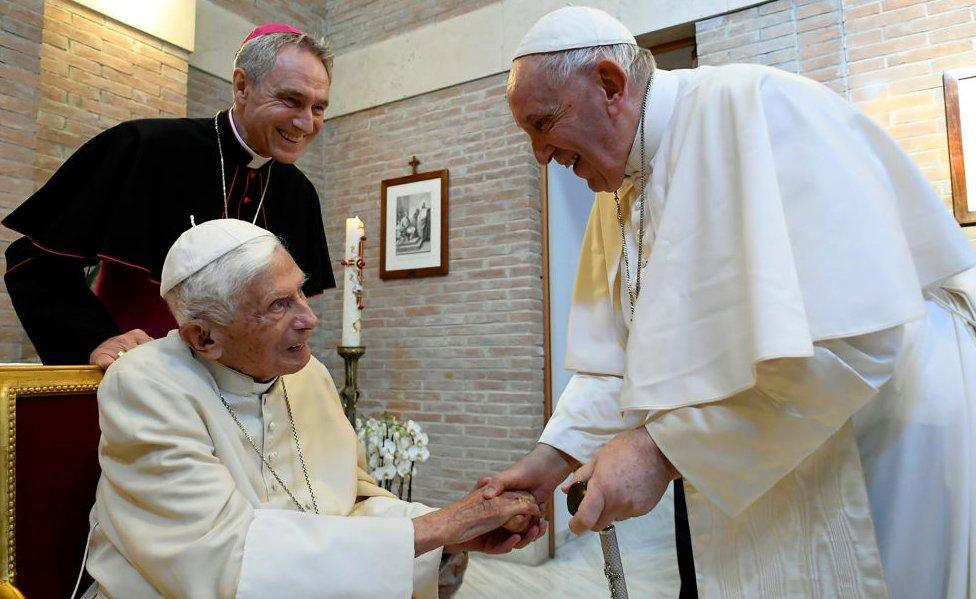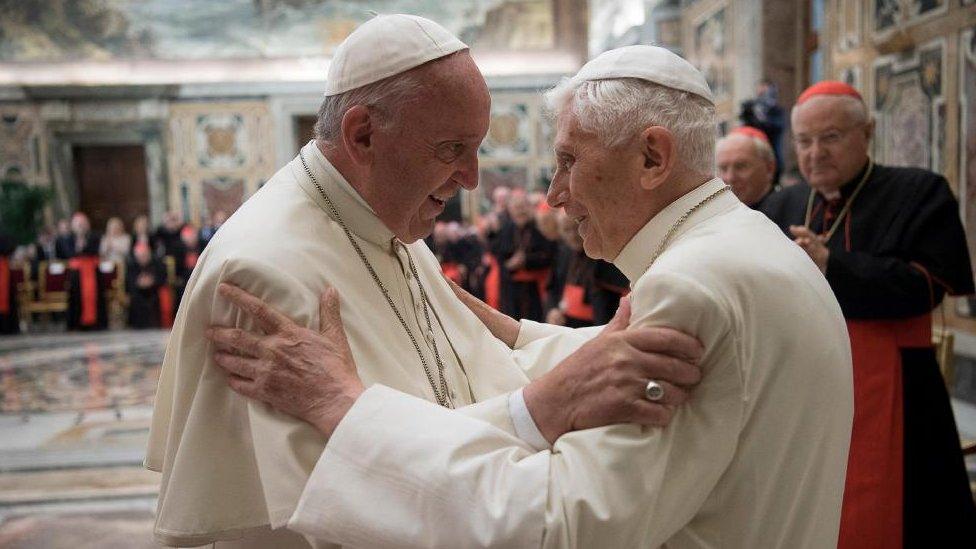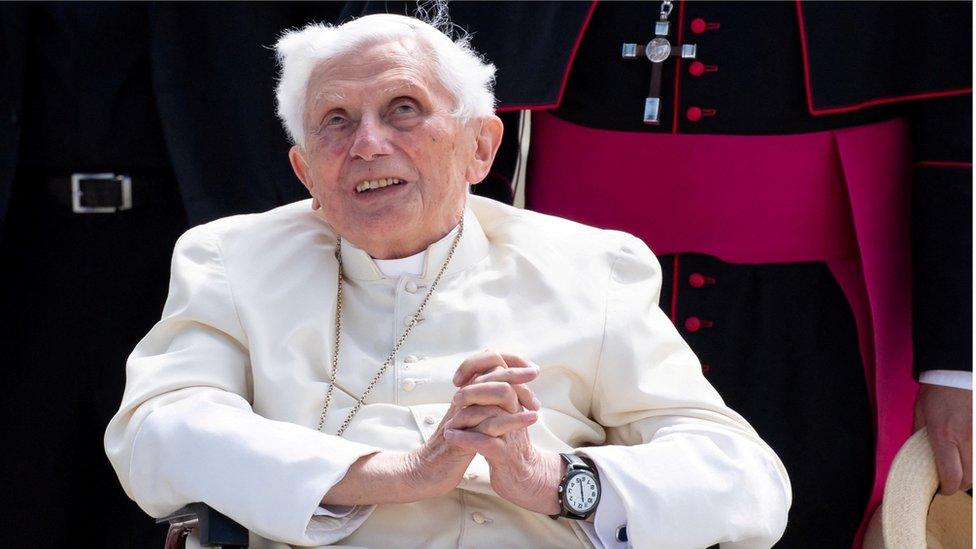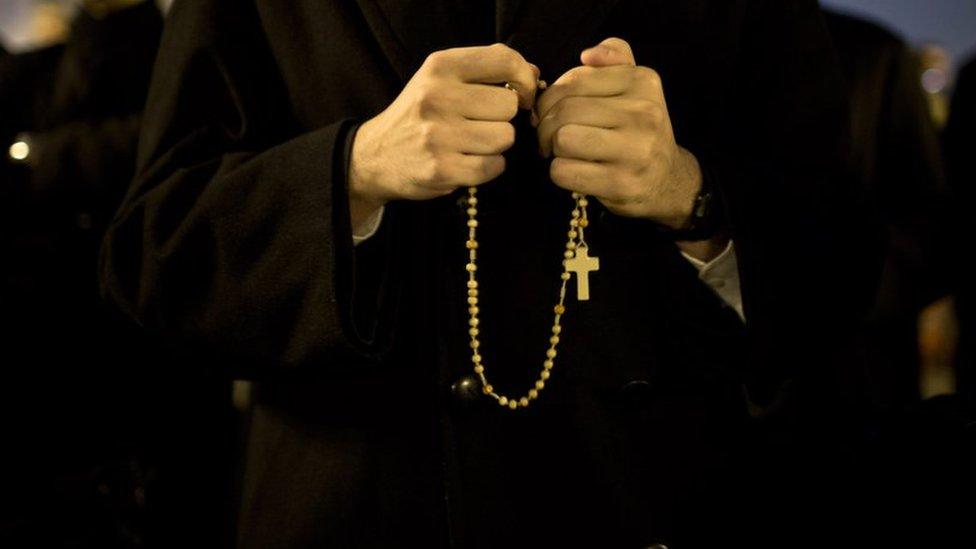Pope Benedict XVI: What the death of a former pope means for the Vatican
- Published

The Catholic Church has strict protocols in place following the death of its leader, but with the death of former Pope Benedict, it is unclear whether those same protocols will apply to a retired pope.
When Benedict XVI resigned in 2013 citing old age, he became the first Pope in 600 years to step down from the role. Born Joseph Ratzinger, the German cardinal was elected in April 2005 and chose to go by the name of Benedict.
For almost a decade there were in effect two popes living at close quarters in the Vatican, because Benedict stayed in the Vatican Gardens at the Mater Ecclesiae monastery, appearing occasionally alongside his successor.
"We've never had this before where a living pope will help bury a dead pope," Catholic historian John McGreevy said.
Even the Middle Ages do not provide a template, because when Gregory XII resigned in 1415 his aim was to bring an end to years of division involving rival challengers to the papacy.

Benedict was pictured on 1 December 2022 at a meeting of the 2022 Ratzinger Awards
The person who runs the Vatican from the death of one pope to the election of another is called a "camerlengo", currently Cardinal Kevin Farrell. But because Benedict was no longer pope some of the cardinal's tasks may no longer be appropriate.
Normally, the camerlengo has the role of officially confirming the pope's death, traditionally by tapping his head three times with a small silver hammer and calling out his name. He would also oversee the destruction of the pope's fisherman's ring, sealing the papal apartments, organising the funeral and preparing a conclave to elect a successor.
As Francis is already Pope, there is considerable uncertainty about what the camerlengo will now do.
A papal funeral is typically presided over by the Dean of the College of Cardinals, Cardinal Giovanni Battista Re. But in this case, Pope Francis will officiate over the funeral, to be held in St Peter's Square.
Each pope can specify their own funeral arrangements, and although Benedict's family is buried in Germany, his biographer Peter Seewald said he wanted to be buried in the tomb that belonged to his predecessor John Paul II before he was canonised and moved elsewhere in the Vatican.
The most significant ritual that usually happens following the death of a pope - electing a new one - will not happen.

Benedict regularly met with Pope Francis (right)
Vatican affairs writer Massimo Franco told the BBC that all the procedures would have to be "written from scratch", and that following Benedict's resignation in 2013 the Catholic Church did not specify what would be done when he died.
He also warned the death of Benedict could have unforeseen consequences on the papacy, such as normalising the resignation of a pope.
"For some within the Catholic Church, the resignation of Benedict represents a unique circumstance that will never have to be repeated," he said.
"For others it may represent a precedent and therefore could be repeated. But this remains a big question mark, just like everything surrounding the death and funeral of Benedict XVI."
As Benedict was previously the head of state of Vatican City - an independent city-state surrounded by Rome and governed by the Pope - it is possible there will be a state funeral with foreign leaders invited, but even that to date is uncharted territory.
This article was first published on 29 December and updated following the death of Benedict XVI.
Related topics
- Published28 December 2022

- Published8 February 2022

- Published5 October 2021
